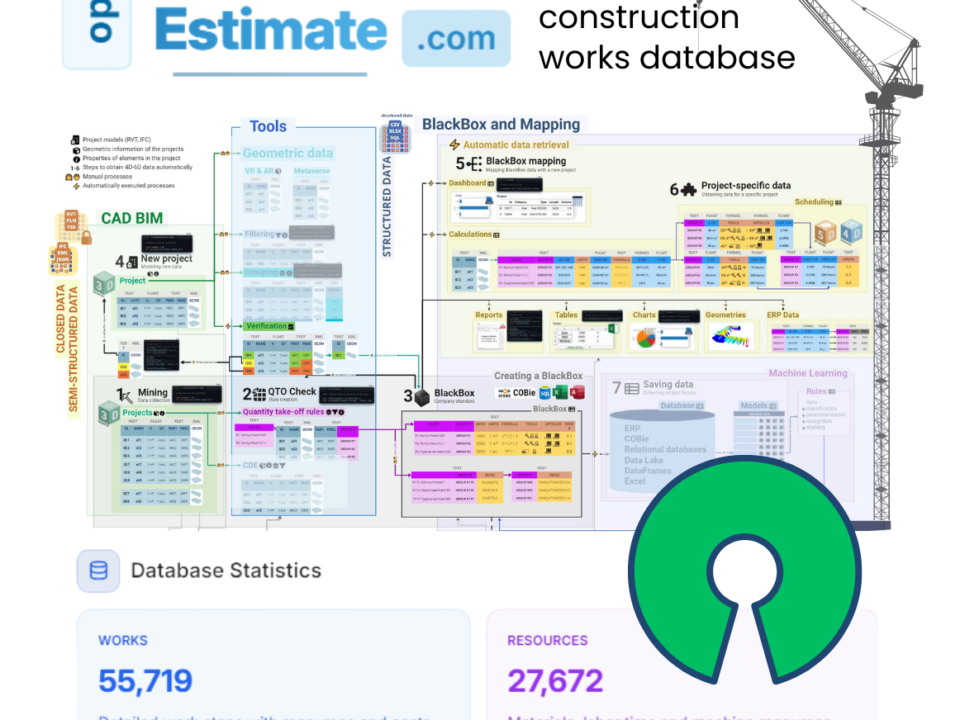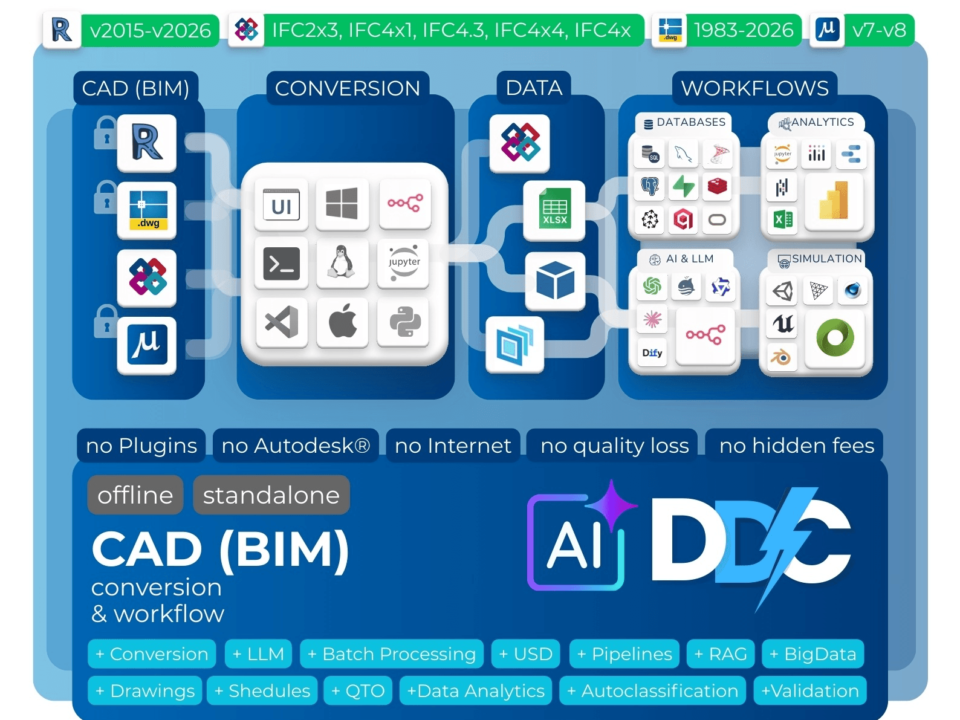🌊 Standard rendering in CAD (BIM) programs often falls short of visualization quality, but game engines such as Unreal Engine and Unity have revolutionized architectural and design visualization. These engines offer fast rendering and intuitive light, material, and geometry settings that greatly improve the visualization process. Clients can now explore virtual building models by interacting with elements such as lighting and furniture in real time, improving their understanding and engagement. Unreal Engine enables metaversions, turning 3D virtual worlds into major social centers.
To use these advanced visualization tools, you need to convert CAD (BIM) data into open formats such as USD, DAE, GLTF and OBJ. The DataDrivenConstruction (DDC) converter facilitates this by converting IFC and Revit files into compatible formats for use in Unreal Engine, Oculus, and Unity without requiring an internet connection. This capability greatly enhances the rendering, visualization and simulation capabilities of architectural and design work:
🌑 Unreal Engine lets you create interactive 3D, augmented (AR) and virtual (VR) reality applications from 3D CAD (BIM) models
🌑 Visualization or simulation of car and people movement can be set up literally in a few clicks. Weather and time are also easily customizable
🌑 Free engines allow you to plug in artificial intelligence algorithms that visually allow you to reproduce simulations in real scenes rather than on paper
🌑 Using Unity and the #ML-Agents toolkit, you can create AI environments that are physically, visually, and cognitively rich
🌑 With Unity #MachineLearning Agents, you no longer "code" emergent behavior, but teach intelligent agents to "learn" using a combination of deep reinforcement learning and simulation learning
🌑 Unreal Engine allows users to actually create their own software (which will probably soon change the way we approach data tools).
Data in non-parametric IFC and proprietary RVT formats, but in open files (XLSX contains all parameters and DAE contains geometric representations of project entities) allow you to make a cast of the entire project and store all project data in open files that don't require third-party algorithms or proprietary products to open.
📈 Streamline your toolkit, strip away the complexity from your workflows, and master the art of utilizing open and straightforward data!
📥 Free DDC converters for Revit (2015-2022) and IFC2x3:
https://datadrivenconstruction.io/index.php/convertors/






















